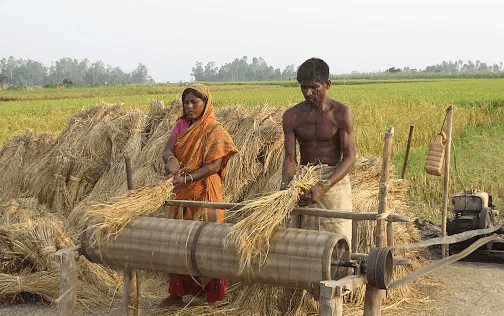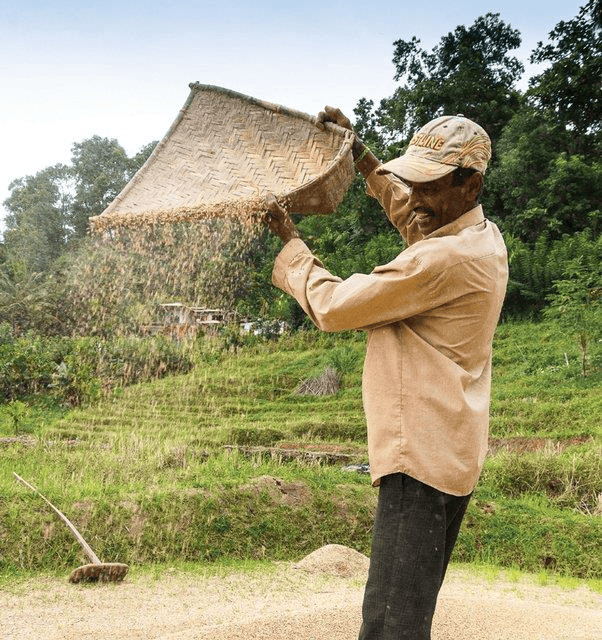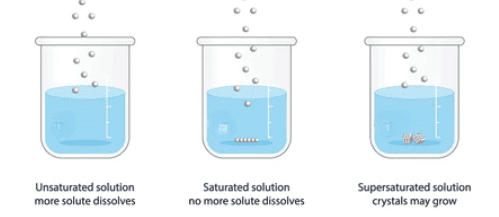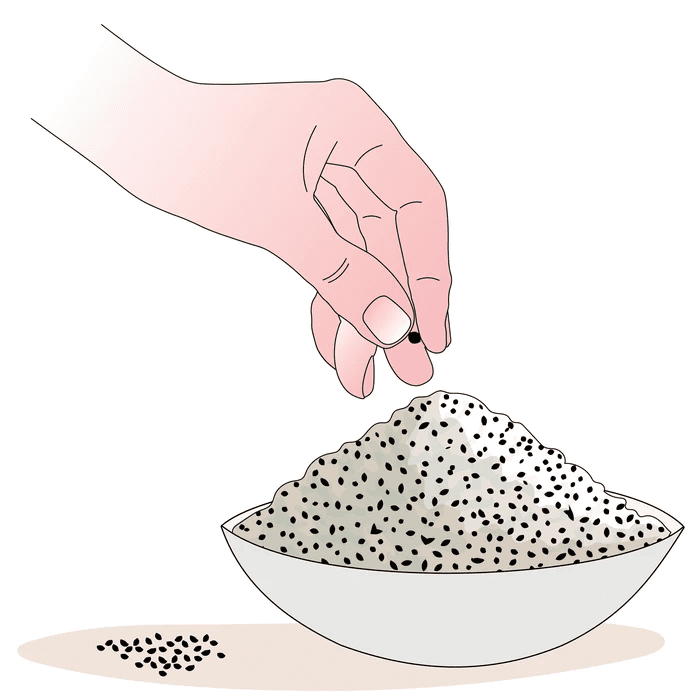MCQ & Extra Questions: Separation of Substances | Class 6 All Subjects (Old NCERT) PDF Download
Extra Questions
Q1: What is done in threshing? How can it be done?
Threshing is the process of separating grains or seeds from the stalks and husks. In threshing, the stalks are beaten to free the grain seeds. Threshing can be done with the help of bullocks or machines.
Q2: Which type of impurities can be separated by hand-picking?
Hand picking is used to separate slightly large sized impurities. It is used when the quantity of impurities is not very large.
Q3: Why is separating different components of a mixture necessary?
a) To separate two different but useful components.
b) To remove impurities or non-useful component from a mixture.
Q4: What do you mean by winnowing? Explain with example
Winnowing is separating the heavier and lighter components of a mixture by wind or by blowing air. For example-separating mixture of saw dust and sand.
Q5: How is sieving used to separate particles of a mixture? Give example.
Sieving allows the fine particles to pass through the holes of a sieve while bigger impurities remain on sieve. E.g. separating bran from flour.
Q6: What is a saturated solution?
When no more solute (e.g. Salt) can be dissolved in the amount of solvent (e.g. Water) taken, the solution is said to be saturated solution.
Q7: What happens when steam comes in contact with the metal plate cooled with ice?
When steam comes in contact with the metal plate cooled with ice, it condenses and forms liquid water.
Q8: What is condensation?
The process of conversation of water vapour into its liquid form is called condensation.
Q9: By which process salt, sand and water can be separated?
Salt, sand and water can be separated by decantation, filtration, evaporation followed by condensation.
Q10: What is the difference between evaporation and condensation?
The process of conversion of water into its vapour is called evaporation. The process of conversation of water vapour into its liquid form is called condensation.
Q11: What is sedimentation?
When the heavier component of a mixture settles after water is added to it, the process is called sedimentation.
Q12: What is Sieving? Where can it be used?
Fine particles are separated from larger particles during the sieving process using a sieve. It is utilised on building sites or in grain mills. Wheat contaminants like husks and stones are eliminated in the flour mill. Sand is sieved to remove stones and pebbles.
Q13: A mixture of iron nails, salt, oil and water is provided to you. Give stepwise methods to separate each component from this mixture.
A mixture of iron nails, salt, oil and water can be separated by the following steps:
Iron nails can be picked out by hand or using a magnet.
By using a separating funnel or decantation, remove the oil.
Using evaporation, evaporate the salt and water mixture. Salt is left behind when water is condensed again.
Q14: List some materials that are used as filters.
Cotton
Filter paper
Sand
Charcoal
Muslin cloth
Q15: Define the term handpicking.
Handpicking is the method of manually removing slightly larger particles from a mixture. For instance, handpicking can be used to separate stone fragments from grains of rice or wheat.
Multiple Choice Questions
Q1: Which method is used to separate pebbles and stones from sand?(a) Handpicking
(b) Winnowing
(c) Sieving
(d) Any of these
Correct option is (c)
Pebbles and stones are removed from sand by sieving. Sieving allows the fine flour particles to pass through the holes of the sieve while the bigger impurities remain on the sieve
Q3: What happens during the sedimentation process?
(a) The heavier component settles at the bottom
(b) The mixture is heated to remove water
(c) The lighter component floats
(d) The components are separated by hand
Correct option is (a)
Sedimentation involves the heavier component of a mixture settling at the bottom when the mixture is left undisturbed. This is often followed by decantation to remove the liquid component.
Q4: What is the main method used to separate grain seeds from stalks?
(a) Winnowing
(b) Handpicking
(c) Filtration
(d) Threshing
Correct option is (d)
Threshing is the process of separating grain seeds from stalks by beating the stalks to free the seeds. It is an essential step in grain processing.
Q5: Which separation technique is used to obtain salt from seawater?
(a) Filtration
(b) Evaporation
(c) Decantation
(d) Sedimentation
Correct option is (b)
Evaporation is used to obtain salt from seawater by allowing the water to evaporate, leaving the salt behind. This method is commonly used in salt pans.
Q6: How can a mixture of sand and salt be separated effectively?
(a) Sieving
(b) Winnowing
(c) Handpicking
(d) By using water and filtration followed by evaporation
Correct option is (d)
The mixture can be separated by adding water to dissolve the salt, filtering out the sand, and then evaporating the water to obtain the salt.
Q7: Which method is best for separating a mixture of sugar and water?
(a) Decantation
(b) Filtration
(c) Evaporation
(d) Sedimentation
Correct option is (c)
The best method for separating a mixture of sugar and water is evaporation.
Here's why:
Decantation: This method is used to separate a liquid from a solid that has settled at the bottom. It is not suitable for separating sugar from water.
Filtration: This method separates solids from liquids or gases. Since sugar dissolves in water, it cannot be filtered out.
Evaporation: This method involves heating the solution to evaporate the water, leaving behind the sugar. It is effective for separating a dissolved solid from a liquid.
Sedimentation: This method is used to separate solid particles that settle at the bottom of a liquid. Since sugar is dissolved in water, it does not settle out.
Q8: What is the purpose of filtration in separation processes?
(a) To separate two solids
(b) To separate an insoluble solid from a liquid
(c) To separate two liquids
(d) To separate gases from liquids
Correct option is (b)
Filtration is used to separate an insoluble solid from a liquid, such as separating tea leaves from tea.
Q9: Why is handpicking a convenient method for separating certain mixtures?
(a) It requires special equipment
(b) It is suitable for large-scale separation
(c) It is convenient for separating large-sized impurities
(d) It requires heating the mixture
Correct option is (c)
Handpicking is convenient for separating large-sized impurities, like stones and husks, from grains because it does not require any special equipment.
Q10: How is filtration used in the preparation of paneer?
(a) By evaporating water from milk
(b) By churning milk
(c) By separating the solid paneer from the liquid whey using a cloth or strainer
(d) By boiling milk
Correct option is (c)
Filtration in paneer preparation involves separating the solid paneer from the liquid whey by using a fine cloth or strainer after adding a coagulant like lemon juice to the milk.
|
297 videos|1066 docs|204 tests
|
FAQs on MCQ & Extra Questions: Separation of Substances - Class 6 All Subjects (Old NCERT)
| 1. What are the different methods used for the separation of substances? |  |
| 2. How does filtration work in the separation of substances? |  |
| 3. What is the process of evaporation in the separation of substances? |  |
| 4. Explain the process of distillation in the separation of substances. |  |
| 5. How is chromatography used in the separation of substances? |  |






















